|
Wednesday June 23rd, In Person and Virtual St. James Room – Hilton Hotel Riverside |
||
| Chair: Olivia Menaguale, Art Historian, Rome, Italy | ||
| US Eastern Time | Session | Speakers |
|
08:30am-10:30am
|
Spes11.1 |
|
|
01:30pm-03:30pm
|
Spes11.2 |
|
Description
Technological advances have changed enormously the way we travel, our access to travel, and cultural heritage, one of the many reasons that we travel globally.
There are no doubts that technology has been an incredible enabler of tourism and cultural heritage. Technology allows a significant number of the world’s population to travel for work or tourism and manage on a huge scale. This joint force also plays a crucial role in the way we travel: choosing a destination and shaping the experience we have when we are there. Technology also allows us to share our experience with families and friends across the world, during and after our trip. According to a Google Travel study, 74% of travelers plan their holidays online, compared to using travel agencies to prepare them. This trend continues to grow as millennials become a key market for tourism. The travel industry has become increasingly aware of this trend and has already taken great strides in adapting its business model and product offering to attract customers, such as informative mobile tour guides of cities and augmented VR experiences when visiting historical monuments or museums.
Enormous strides have also been made in cultural heritage which provide physical tourists, as well as those accessing cultural heritage online virtually, with a more informative experience, through the development of digital tools, data representations, models, and media. This digital metamorphosis has made cultural heritage truly global. We now have instant online access to communicate, share, and archive for preservation and security purposes (as art works are often fragile and may perish in time) an almost infinite library of publications, digitized archives and photo-archives, and virtual historical models. Onsite we use audio and audio-video guides or 3D augmented reality to gain a deeper and more visual understanding of cultural heritage sites. Technology and IoT has made artworks and sites more secure and allow them to be monitored 24/7 for protection and conservation.
Technology has also opened new forms of art itself. Digital art has brought us digital artists, a new form of contemporary art media. Every day, this form of art gives birth to a rich wealth of digital children.
On Wednesday 23 June 2021, we will be holding two exciting sessions, looking at the State of the Art for IoT technology in Tourism and Cultural Heritage from a global perspective with presentations from speakers who are international experts, from government, and industry.
Chairs
Olivia Menaguale, Art Historian, Rome, Italy
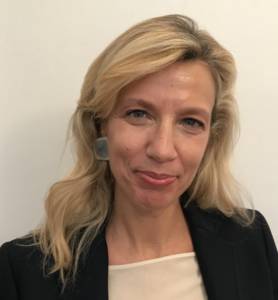 Olivia Menaguale is an art historian and archaeologist, whose lifelong passion in her studies and career, over the last 30 years, has been to improve the communications and access to Cultural Heritage and Tourism in Europe and the US, working alongside experts in technology from digital photo-archives to the financial art world, from audio-video guides to 3D reconstructions. She has worked alongside national and local governments, superintendencies, art experts, archaeologists, collectors and auction houses, and in projects for museums to historical and archaeological sites, from theme parks to government committees, from art exhibitions to world expos.
Olivia Menaguale is an art historian and archaeologist, whose lifelong passion in her studies and career, over the last 30 years, has been to improve the communications and access to Cultural Heritage and Tourism in Europe and the US, working alongside experts in technology from digital photo-archives to the financial art world, from audio-video guides to 3D reconstructions. She has worked alongside national and local governments, superintendencies, art experts, archaeologists, collectors and auction houses, and in projects for museums to historical and archaeological sites, from theme parks to government committees, from art exhibitions to world expos.
Menaguale received a Doctorate in Modern Literature, with a specialisation in Art History at the Università Cattolica del Sacro Cuore in Milan (Italy), with 1st class honours 110/110 Cum Laude.
Merging her knowledge and skills in art history and archaeology with technology, she has developed projects to research and provide access to art, both onsite and virtually offsite. She started in the early 1990s, with the development and management of a financial photographic database on works of art that pass at auction called “I-on-Art”. It was commercialised and used by art collectors, auction houses and museums, internationally. This led to two pioneering digitisation projects, in London and New York, for the world’s two largest art history photo-archives of a total of more than 3.5 million annotated photos held at the Witt Library at the Courtauld Institute (London, UK) and the at Frick Museum & Art Reference Library (New York, NY, USA).
Since then, Olivia Menaguale has led and been involved in other digital projects, including the 3D reconstruction of ancient Rome – in collaboration with the University of Virginia (Charlottesville, VA, USA), UCLA (Los Angeles, CA, USA), and the Italian Ministry of Culture. This remains the largest 3D model of any historical site. In 2008, Google Inc. (Mountainview, CA, USA) partnered the project, and together launched the first historical city, “Ancient Rome” on Google Earth which could be flown over in 24 languages and was explored by 78 million people worldwide in the first week of going public.
Some other projects she has led, include the creation of a mini theme park on the Colosseum called “Rewind Rome” for tourists visiting the City of Rome; and a 3D CAVE inside the historical site of Pompeii offering the 2.5 visiting visitors with a 360° fully immersive reconstruction of a bustling street in 64 A.D. before the eruption.
Olivia also led the team to create and manage the world’s first audio-video guide for a historical site, at the Colosseum in 2006. This service, providing over 100 minutes of videos, photographic explanatory materials and narration, is still offered to the 4 million visitors to the site today, available in 9 languages.
Due to her unique knowledge and experience in bringing together the very differing worlds of technology with art history and archaeology, she has represented her home country Italy, in state missions, such as to the Middle East with the former Italian President, On. Napolitano, and in curating an Old Master Exhibition on Italian Art at the 2015 World Expo in Milan (Italy). She has also taught a series of lectures on art and technology at the Università di Roma La Sapienza in Rome (Italy), called “I mestieri dell’arte” (The jobs of the art world” which was then published under Electa (Mondadori).
Speakers
Patrikakis Charalampos, Professor of Electrical and Electronics Engineering, University of West Attica, Aegaleo, Greece
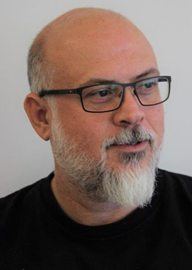 Dr. Charalampos Z. Patrikakis is an Associate Professor at the Dept. of Electrical and Electronics Engineering of the University of West Attica. He has participated in more than 35 National, European, and International programs, in 20 of which he has been involved as technical coordinator or principal researcher. He has more than 100 publications in chapters of books, international journals, and conferences, and has 2 contributions in national legislation. He is a member of the editorial committee of more than 50 international journals and conferences and has acted as editor in the publication of special issues of international journals, conference proceedings volumes and coedited three books. He is a senior member of IEEE, a member of the Technical Chamber of Greece, and counselor of the IEEE Student Branch of the University of West Attica.
Dr. Charalampos Z. Patrikakis is an Associate Professor at the Dept. of Electrical and Electronics Engineering of the University of West Attica. He has participated in more than 35 National, European, and International programs, in 20 of which he has been involved as technical coordinator or principal researcher. He has more than 100 publications in chapters of books, international journals, and conferences, and has 2 contributions in national legislation. He is a member of the editorial committee of more than 50 international journals and conferences and has acted as editor in the publication of special issues of international journals, conference proceedings volumes and coedited three books. He is a senior member of IEEE, a member of the Technical Chamber of Greece, and counselor of the IEEE Student Branch of the University of West Attica.
Ettore Galasso, ICT Consultant, Fiera di Milano SpA., Milan, Italy
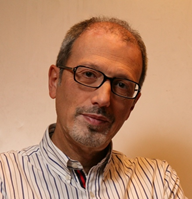 Ettore Galasso is today an ICT consultant with deep knowledge of the Tradeshows and Events industry. From 2002 to 2020 he has worked in the ICT department of the Fiera Milano Group covering various management positions. His initial assignment in 2002 was to make available the first digital platform for the tradeshow business of Fiera Milano; the www.expopage.net portal was an innovative solution for the industry with a User Generated Content approach and a full set of services to enable a digital relationship between visitors and exhibitors. Since then, he has been mainly focused on helping the company to enter the digital world and benefit from it, by redesigning and digitalizing processes to increase operations efficiency, by supporting sales and marketing teams to leverage the new digital tools becoming available, by enhancing the online and onsite user experience of the stakeholders. More recently he has been driving the renewal of the technological infrastructures of the Fiera Milano fairground, moving computing resources into the cloud, installing a Smart Grid of beacons enabling location based services, a digital signage infrastructure to provide information to visitors and a new networking infrastructure to support the growing demand for connection in mobility inside the fairground.
Ettore Galasso is today an ICT consultant with deep knowledge of the Tradeshows and Events industry. From 2002 to 2020 he has worked in the ICT department of the Fiera Milano Group covering various management positions. His initial assignment in 2002 was to make available the first digital platform for the tradeshow business of Fiera Milano; the www.expopage.net portal was an innovative solution for the industry with a User Generated Content approach and a full set of services to enable a digital relationship between visitors and exhibitors. Since then, he has been mainly focused on helping the company to enter the digital world and benefit from it, by redesigning and digitalizing processes to increase operations efficiency, by supporting sales and marketing teams to leverage the new digital tools becoming available, by enhancing the online and onsite user experience of the stakeholders. More recently he has been driving the renewal of the technological infrastructures of the Fiera Milano fairground, moving computing resources into the cloud, installing a Smart Grid of beacons enabling location based services, a digital signage infrastructure to provide information to visitors and a new networking infrastructure to support the growing demand for connection in mobility inside the fairground.
In his previous working experience, he covered marketing and sales positions at Olivetti (then a leader manufacturer of PC and Unix minicomputers) and Novell (then the leading vendor of networking software). He holds a master’s degree in engineering (1984) with a thesis on Image Processing Systems.
Tomi Ilijaš, CEO Arctur, Nova Gorica, Slovenia
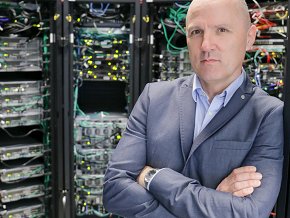 Tomi Ilijaš is the founder and CEO of Arctur and he holds a MSc degree from Ljubljana University, Faculty of Electrical Engineering. Mr. Ilijaš is an entrepreneur focusing on Hi-Tech innovation, who has shared his knowledge and experience to many start-ups and spin-offs in the region. He participated in several EU funded R&D projects, inventing new business models in HPCaaS, and successfully breaking the barriers in bringing HPC to manufacturing SMEs. Recently, his research focus is on transferring new technologies like HPDA, IoT and Blockchain from Industry 4.0 to tourism. He is also a member of EUROHPC Research & Innovation Advisory Group (RIAG) and member of PRACE Industrial Advisory Committee.
Tomi Ilijaš is the founder and CEO of Arctur and he holds a MSc degree from Ljubljana University, Faculty of Electrical Engineering. Mr. Ilijaš is an entrepreneur focusing on Hi-Tech innovation, who has shared his knowledge and experience to many start-ups and spin-offs in the region. He participated in several EU funded R&D projects, inventing new business models in HPCaaS, and successfully breaking the barriers in bringing HPC to manufacturing SMEs. Recently, his research focus is on transferring new technologies like HPDA, IoT and Blockchain from Industry 4.0 to tourism. He is also a member of EUROHPC Research & Innovation Advisory Group (RIAG) and member of PRACE Industrial Advisory Committee.
Antonio Liotta, Full Professor in the Faculty of Computer Science, Free University of Bozen-Bolzano, Italy
 Antonio Liotta has been Full Professor at the Faculty of Computer Science, Free University of Bozen-Bolzano since September 2020, where he teaches Data Science and Computer Networks. He has held full professorship positions since 2008 at: Eindhoven University of Technology, NL (Chair of communication network protocols); University of Derby, UK (Chair of Data Science and founding Director of Data Science Research Centre); and Edinburgh Napier University, UK (Chair of Data Science and Intelligent Systems). Previously, he has held academic positions in the UK, between February 2001 and October 2008, at University of Surrey and Essex University. He has also held visiting and distinguished professorships in the UK, Australia, and China.
Antonio Liotta has been Full Professor at the Faculty of Computer Science, Free University of Bozen-Bolzano since September 2020, where he teaches Data Science and Computer Networks. He has held full professorship positions since 2008 at: Eindhoven University of Technology, NL (Chair of communication network protocols); University of Derby, UK (Chair of Data Science and founding Director of Data Science Research Centre); and Edinburgh Napier University, UK (Chair of Data Science and Intelligent Systems). Previously, he has held academic positions in the UK, between February 2001 and October 2008, at University of Surrey and Essex University. He has also held visiting and distinguished professorships in the UK, Australia, and China.
Since 1994 he has worked on a range of topical research issues in intelligent systems, including artificial vision, autonomous robots, and intelligent networks, with particular attention to data-intensive systems and artificial intelligence. His team is at the forefront of research in network and data science, specifically in the context of Smart Cities, Internet of Things, and smart sensing. He studies the complexity of modern systems from the viewpoints of complex networks, machine learning, and artificial intelligence. His team has pioneered bio-inspired methods to tackle the digital data deluge in practical industrial settings. His work on smart sensors has been featured in the media after his team realized miniaturized machine learning for the Internet of Things. His work was in De Volkskrant (the most important Dutch daily; circulation 250K), in IEEE Spectrum (the IEEE flagship magazine; circulation 400K) and earned him the 2015 Eindhoven University valorization award. His team has recently made headlines again in machine learning acceleration – Nature Communication paper (IF 12.124).
Antonio played a prominent role in 15 large EU research projects and won 31 national grants (in UK, NL, China, and Australia). During the last decade alone, he has secured grants for over EUR 15m, 10% of which funded directly from industry. Through a dense network of multi-disciplinary collaborations (150+ co-authors from all continents), he has made breakthroughs in Internet of Things, Smart Cities, Smart Building, Smart Energy, Smart Sensing, Intelligent Lighting, Cyber-Physical Systems, ICT, multimedia networking, and human-computer interaction. He has collaborated with computer scientists and engineers but also with psychologists, urbanists, mathematicians, industrial designers, physicians, and civil servants. With his team, Antonio has published over 350 papers, attracting 12 best-paper awards and over 3,800 citations. Please find Antonio’s publications and bibliometric data at http://bit.ly/Liotta-papers.
He is Editor-in-Chief of the Springer Internet of Things book series (>150k downloads); associate editor of the Journals JNSM, IJNM, JMM, and IF; and editorial board member of 6 more journals. He has 6 patents and is the author of the book Networks for Pervasive Services: six ways to upgrade the Internet (4k+ downloads). He has graduated over 30 research students, six of whom have already achieved prominent academic positions (1 vice-president, 1 college dean, 3 assistant professors, and 1 researcher).
Tim Luft, CEO Virtual Reality Simulation Systems Ltd., Telford, UK
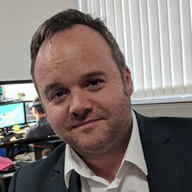 Tim is a Digital Media Entrepreneur based in the West Midlands (Shropshire), Tim’s focus surrounds the roll out of virtual and augmented reality building on the expertise of the UK Video game and Film industry. Tim has run University Institutes which have researched the use of 3D environments for teaching and learning, here Tim built up his understanding of VR and AR technologies, more recently Tim established his own Virtual Reality development studio in the West Midlands (Talkout VR), the company build world class enterprise training/ simulations applications and offers clients access to a technology showcase which provides hands on access to the latest advances in 3D simulation and virtual reality. Tim has led XR projects covering key sectors such as Sports, Tourism, Healthcare and Education.
Tim is a Digital Media Entrepreneur based in the West Midlands (Shropshire), Tim’s focus surrounds the roll out of virtual and augmented reality building on the expertise of the UK Video game and Film industry. Tim has run University Institutes which have researched the use of 3D environments for teaching and learning, here Tim built up his understanding of VR and AR technologies, more recently Tim established his own Virtual Reality development studio in the West Midlands (Talkout VR), the company build world class enterprise training/ simulations applications and offers clients access to a technology showcase which provides hands on access to the latest advances in 3D simulation and virtual reality. Tim has led XR projects covering key sectors such as Sports, Tourism, Healthcare and Education.
Pedro Santos, Head of the Competence Center for Cultural Heritage Digitization, The Fraunhofer Institute, Darmstadt, Germany
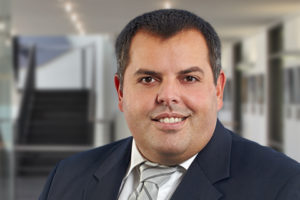 Pedro Santos has been Head of the Competence Center for Cultural Heritage Digitization since 2012. Before he was Deputy Head of the Department of Industrial Applications, today Department of Interactive Engineering Technologies. During various projects in the field of digital preservation of cultural heritage objects and of the increasing demand for mass-scale 3D digitization in this field, his department develops the world’s first approach for fast, economic, and automated 3D digitization of cultural heritage with emphasis on capturing optical material properties.
Pedro Santos has been Head of the Competence Center for Cultural Heritage Digitization since 2012. Before he was Deputy Head of the Department of Industrial Applications, today Department of Interactive Engineering Technologies. During various projects in the field of digital preservation of cultural heritage objects and of the increasing demand for mass-scale 3D digitization in this field, his department develops the world’s first approach for fast, economic, and automated 3D digitization of cultural heritage with emphasis on capturing optical material properties.
Pedro Santos, who has been researcher at Fraunhofer IGD since 2002, studied computer science at the University of Darmstadt and the “Technical University of Lisbon. At present he is also attaining his PhD on the subject of Fast, economic, and automated 3D digitization of cultural heritage” at Technical University Darmstadt.
During his professional career he was involved in the development of the first immersive CAD modeling systems to be used for the early stages of product development as well as in the design of “see-through head-mounted displays”, mobile applications in augmented reality and optical “marker-based” and “markerless” tracking systems. Pedro Santos is author and co-author of over 50 publications as well as reviewer for the Association for Computing Machinery (ACM), the European Association for Computer Graphics (Eurographics), the IEEE Computer Society and other organizations.
Urška Starc-Peceny, Chief Innovation Officer, Arctur Ltd., Nova Gorica, Slovenia
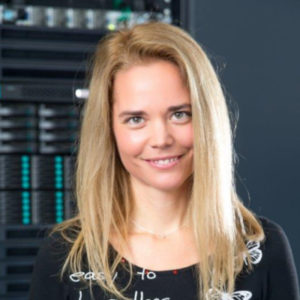 Urška Starc-Peceny, PhD., has gained an international education in Slovenia, Italy, and Austria. Her PhD thesis, at the University of Salzburg, in Business Communication with specialization in the New Media and Technologies entitled “Netlife” has paved the way in 2001 in research of collaboration design in virtual reality, in which AI and big data play an increasing role. In engagements ranging from Europe to the Middle East, she has gained 20+ years of experience as an entrepreneur.
Urška Starc-Peceny, PhD., has gained an international education in Slovenia, Italy, and Austria. Her PhD thesis, at the University of Salzburg, in Business Communication with specialization in the New Media and Technologies entitled “Netlife” has paved the way in 2001 in research of collaboration design in virtual reality, in which AI and big data play an increasing role. In engagements ranging from Europe to the Middle East, she has gained 20+ years of experience as an entrepreneur.
As Chief Innovation Officer at Arctur Ltd., she currently leads the Tourism 4.0 department focused on spreading the technologies from Industry 4.0 into tourism to create a future, in which we all want to live in. Living between Slovenia and Vienna, Austria, where she hacks the collaboration formats as lead of the NASA Space Apps Challenge in Austria, she is also a university lecturer in smart-related topics.


